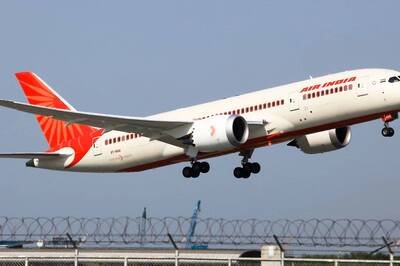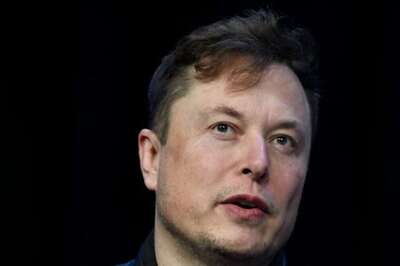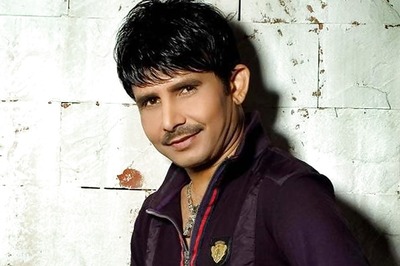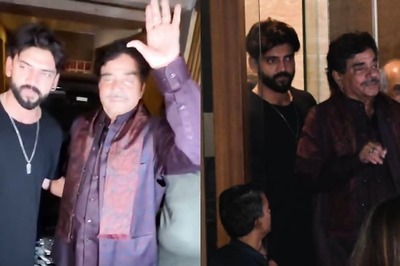
views
While most nations chose to usher in a quiet New Year after the harrowing happenings of 2021, the Korean Peninsula has seen a rapid escalation of tensions as consequences of a major military build-up play out. As both Pyongyang and Seoul have chosen to rapidly upgrade their military capabilities, the stage is now set for a dangerous nuclear drama to take hold of the region.
Ever since its negotiations with the United States stalled in Stockholm in 2019, Pyongyang has made no bones about its desire to vastly upgrade its missile capabilities. Early in 2021, Kim Jong Un stood in front of the Eight Party Congress of the North Korean Worker’s Party and laid out a modernisation programme that read like a Christmas wish list. After developing a hydrogen bomb and testing long-range intercontinental ballistic missiles in past years, Kim revealed his plans to acquire tactical nuclear weapons, nuclear submarines, unmanned aerial systems, and a range of new missiles. As the reclusive Hermit Kingdom has let its missiles fly in the first months of 2022, Kim Jong-Un has confirmed that, even in the face of economic devastation after the COVID-19 pandemic, his country’s path to ever more devastating military capabilities will continue unabated.
Worryingly for the Seoul-Washington alliance, North Korea’s development of hypersonic missiles, rail-based capabilities, and missile launch bases only makes it more difficult for the two democracies to deter the cantankerous North. For example, rail-based firing capabilities force Pyongyang’s neighbours to expend more resources on tracking and surveilling North Korea’s rapidly expanding missile launch capabilities. Intelligence services globally were rocked by revelations of an underground missile base located just 15 miles from North Korea’s border with China.
Even as Seoul, Tokyo and Washington work together to deter Pyongyang, revelations of new missile capabilities have driven home a few truths. First, despite its combined intelligence and surveillance capabilities, the American-led alliance structure in East Asia cannot pin down the exact destructive capabilities Pyongyang possesses. Further, as the revelations of a newly discovered missile base indicated, neither does it have an exact list of the physical locations these destructive threats might emanate from. This complicates the alliance’s security calculations in the region. In case a military conflict erupts, an American coalition attempting to neutralise North Korea’s substantial armoury can have no guarantee that a pre-emptive strike on known missile launch facilities will succeed in cutting Pyongyang down to size. Secondly, Kim Jong Un’s drive to add to his nation’s stock of weapons will increasingly strain missile defence systems in Japan and South Korea.
Even as its position is threatened, Seoul has also been driven to action by its belligerent neighbour. President Moon Jae-In has increased military spending by an average of 7.4 per cent every year since taking office in 2017. Driven by his stated vision of building “a country that no one can shake”, President Moon stood up a new military acquisitions agency and has backed the acquisition and development of advanced surveillance capabilities, precision-guided missiles and missile-defence systems. South Korea’s recent launch of a Submarine Launched Ballistic Missile (SLBM) made it the first country with non-nuclear capabilities to acquire such a weapon.
Seoul has also undertaken a modernisation effort designed to counter its North neighbour. Known as the 3K System, it consists of the pre-emptive Kill Chain system, the Korea Air and Missile Defence System, and the Korea Massive Punishment and Retaliation System. While the Kill Chain system aims to preemptively strike and destroy North Korea’s missile launch capabilities, the Korea Air and Missile Defence System looks to defend from a barrage of North Korean missiles that would inevitably fly in case of a conflict. Finally, and most controversially, the Korea Massive Punishment and Retaliation looks to inflict severe costs on the North Korean leadership by targeting leadership facilities.
Seoul has poured substantial sums into the acquisition of reconnaissance capabilities, strike missiles, and missile defence systems. In doing so, it has substantially altered North Korea’s calculations as well. While Washington and Seoul’s pre-emptive strikes may not eradicate all of Pyongyang’s vast armouries, they could substantially cripple these capabilities. Further, North Korea’s leadership, which prizes its survival over all other goals, will doubtless be threatened by the Massive Punishment system which targets high-level political and military leadership in particular.
It appears that the Korean Peninsula is in the midst of a Mexican standoff. Washington and Seoul fear that Pyongyang’s acquisition of new and improved missiles and launch capabilities will severely stress existing missile defence systems. Should North Korea begin offensive actions, it could inflict severe damage after overwhelming missile defence systems. This creates increased pressure on Seoul to utilise its pre-emptive strike capabilities in case a political crisis threatens to veer into open conflict. Similarly, the advancements in the South Korean military’s strike capabilities puts additional pressure on Pyongyang. Given Seoul’s proposed plan to pre-emptively destroy North Korea’s missiles and leadership, the reclusive state might be compelled to “use or lose” its military capabilities. Indeed, the leading Presidential candidate, Yoon Seok Yeol, has termed interception of North Korea’s missiles “practically impossible”. To Yoon, who may soon find himself ensconced in the President’s palace, “the only method to prevent them is conducting a preemptive strike when we detect signs” of a threatening launch. Each side has found a chink in the armour of the other and the result can only be a worsening of tensions on the Korean Peninsula.
The situation as it stands provides no easy way out. While the US has sought negotiations with Pyongyang since the Biden administration took office, the US Special Representative Sung Kim has been left twisting in the wind as North Korea has rejected overtures. China, a major power that holds considerable sway with North Korea, is unlikely to smooth the road to diplomacy given that both superpowers are locked in a geopolitical arm-wrestle. Seoul is currently preoccupied with a tightly contested Presidential election and will be unable to substantively contribute to diplomacy until a new administration is elected and has gotten a chance to get its feet under the table. The US-led coalition in Asia is also beset by internal rivalries as its two allies, Japan and South Korea, have yet to resolve the tensions that have derailed their relationship since 2018.
Thus, Biden’s team will have its hands full. Even before negotiations begin, Washington will have to bring its squabbling allies to the table and hammer out a common set of objectives. After the failure of US negotiators to secure a sweeping grand bargain with Pyongyang that traded denuclearisation for sanctions relief, the focus will likely be on a smaller, phased agreement that will seek to cap North Korea’s arsenal and prevent further testing and weapons development. Washington will also have to carefully design incentives for North Korea to cease improvements on its existing capabilities as well as an inspections regime that will monitor North Korean commitments. The latter is a particularly difficult task given the deep paranoia the nation’s security forces have about inspections into military facilities. Finally, a completed deal without the prospect of complete denuclearisation will also run the risk of protracted domestic opposition, particularly by Biden’s Republican opponents.
North Korea, long known as the “Impossible State”, is proving to be just as insuperable a problem for Biden as it was for his predecessors.
This article was first published on ORF.
The author is a research associate, strategic studies programme, Observer Research Foundation (ORF). The views expressed in this article are those of the author and do not represent the stand of this publication.
Read all the Latest Opinion News and Breaking News here




















Comments
0 comment